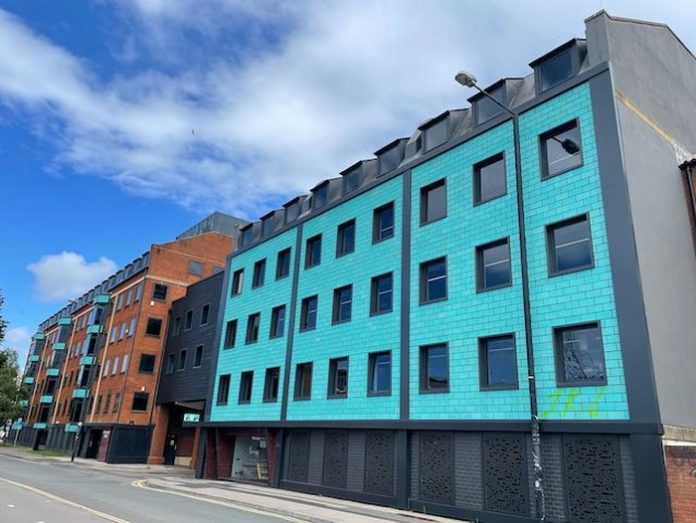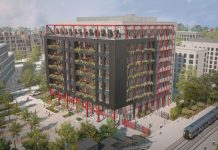The first half of 2021 saw a marked divide between the fortunes of the city centre and out of town office markets.
Bristol city centre largely shrugged off Covid uncertainties, with take up at around 87% of the five-year average – a figure most agents would have readily accepted in advance.
The two quarters were not too far apart in volumes, with a take-up of 116,457 sq ft in Q1 followed by one of 103,498 sq ft. The stand-out deal of Q1 was 21,888 sq ft let to the Department of Work and Pensions at 101 Victoria Street.
Bristol-based e-commerce fulfilment and storage company Huboo agreed terms on 18,882 sq ft of space in the recently refurbished 41 Corn Street and there were two further deals of 10,000 sq ft plus: Pure Electric signing up to 15,190 sq ft at 10 Wapping Road and Access to Music moving into 10,300 sq ft on the first floor of The Programme, formerly The Pithay.
The BBC relocating its Natural History unit from Whiteladies Road into three floors of Bridgewater House, Finzel’s Reach, represented the biggest single deal of H1 as well as Q2: 60,251 sq ft. For those interested in local history, the BBC has occupied Broadcasting House since Bristol’s then Lord Mayor opened the site in 1934 and it has grown significantly since to take on numerous adjoining buildings.
Headline rents remain unchanged from last year at £37.50, with rent-free incentives typically pushing out to 12 months on a five-year lease. Deals are also taking longer to come to fruition as some businesses ponder their options on what their space requirements might be longer term.
In contrast, activity out of town was well below the five and ten-year averages. Some 61,523 sq ft was let in Q1 of 2021 and just 33,259 sq ft in Q2, with NNB Generation’s move into 800 Aztec West at 32,007 sq ft the only deal north of 7,000 sq ft. Headline rents also remain well behind the city centre at £23.50 psf, with insufficient demand and too much supply to drive them upwards.
On the plus side, CEG are looking to construct 80,000 sq ft of brand new lakeside space at Aztec West 1000, which promises to be one of the new generation of offices looking to move rents upwards by meeting today’s office critiera.
CEG are quoting £26.50 psf, which would definitely set a new benchmark and – if other developers locally to test the water. Suites at Aztec 1000 will likely be from 5,000 sq ft upwards and appeal particularly to professional services companies wanting good motorway access.
The perennial question, is whether it’s a landlord or tenant market out there.
The answer currently isn’t straightforward, as it depends entirely on the product and reflects the “flight to quality” dynamic that has dominated in Bristol for some time now. For high-quality space offering physical as well as contractural flexibility, plus a good dose of “wellness”, landlords definitely hold the cards. Poorer calibre space without staff facilities is harder to shift and will often require concessions to get a deal over the line.
The rents commanded by good quality refurbished space – around £5 psf below Grade A – is also proving a stimulus to landlords to invest, with a number of imaginative projects coming to fruition in H2.
The next 18 months should also see around 350,000 sq ft of brand new Grade A arrive, in the likes of AXA/Bell Hammer’s Assembly C, CEG’s EQ and Nord’s Portwall Square. All of which represent a healthy input of fresh stock but should not lead to an oversupply on current take-up trends.
Less space, better quality
The trend discussed in previous market monitors of businesses responding to the appeal of more flexible working is currently being finessed, and we are starting to see far more of a bespoke approach.
Yes, companies (in general) are looking to take less space of a better quality: higher margin businesses especially are installing fewer desks as staff only come in for several days a week; but they also recognise that they need dedicated areas to train staff, for project collaboration, for employees to take some “chill-out” time or simply work away from their desk.
That requirement is not quite so pronounced with lower margin businesses who seek to make space (and cost) savings where staff can effectively work more from home, and require less in the way of shared spaces when they are in the workplace.
There is also a growing recognition that working from home for much or all of the time is not necessarily conducive to good mental health for many personnel, and so the hybrid model is likely to be the most popular as and when we return to “normal”. Quite how that balances out long term is still uncertain, but will probably vary from sector to sector.
ESG: the next big driver in office occupation?
ESG (or Environmental, Social and Governance to give it its full title) has been with us for some time now, with a growing tide of companies eager to embrace the concept – not just to burnish their corporate credentials but also to attract staff, woo customers and win contracts.
Disclosures for climate-related elements will be mandatory across the UK economy by 2025 with listed companies already required to disclose for years beginning on/after 1 January 2021.
But many companies are already ahead of the curve, recognising that it’s not just a good look … but also good for business. Many organisations already expect their supply chain to comply with ESG too.
At a time of growing concern about climate change, being able to tout sound carbon credentials can be a key business differentiator.
So how will this impact the Bristol office market?
The buildings we occupy – and the way we occupy them – can account for an important part of our carbon footprint, one of the three pillars of ESG, taking on board construction materials, efficiency (or otherwise) of the heating and air conditioning, use of water (and rainwater), impact on the local environment and so on.
The workplace can also feed into other elements of ESG, such as employee health and safety; so having good air circulation, green spaces to relax in and so on can be factors when measuring the sustainability or ethical impact of a business. Having facilities that encourage or enable walking or cycling to work is another plus.
It’s no coincidence that all of the new buildings coming out of the ground in Bristol have one eye on achieving favourable BREAAM sustainability assessments to ensure their developments are (to quote the Building Research Establishment) “more sustainable environments that enhance the well-being of the people who live and work in them, help protect natural resources and make for more attractive property investments.”
Every savvy developer looking to refurbish an existing property will (or should) be doing the same, and there’s no question that many current occupiers of poorly-performing buildings will be voting with their feet when the time comes for their next move.
The plus side for developers and landlords investing in ESG is that a building that ticks the right boxes will outperform its underachieving peers – both in terms of the calibre of tenants it attracts and in the rent it will achieve.
Looking ahead
The Bristol office market is well placed for the long-awaited return to work in Autumn, and pent up demand from occupiers is likely to materialise as deals currently being negotiated reach solicitors hands – with those properties offering a high degree of quality, flexibility and “wellness” best placed to complete.




















